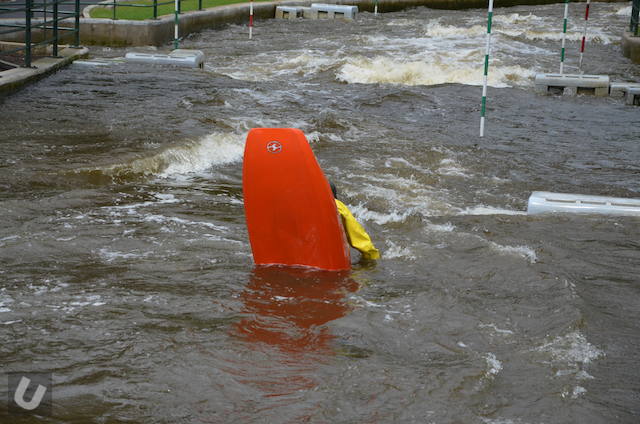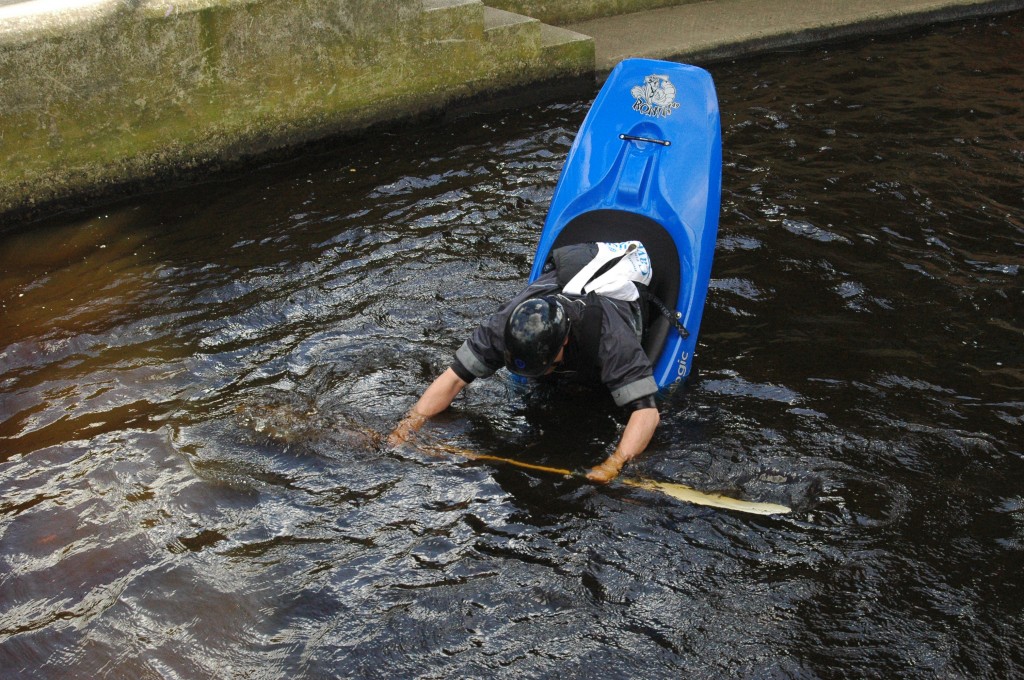The bow stall is one of these great new moves that has captured the imagination of paddlers the world over. It’s not a dynamic move, no “air” is gained but it shows the paddlers skill and control of the boat. Essentially the bow stall involves balancing the boat on its bow and keeping it in that position using body weight and small paddle adjustments.
First things first you’ll need a fairly slicey boat and a bit of room. A double pump initiates the move. The easiest way to do this is to paddle forwards at a steady pace, and then put in a strong forward stroke as you edge your kayak and try to lift your feet off the water. As the forward stroke ends and the bow leaves the water, turn the paddle movement into a reverse stroke to slice the bow down. As the bow slices into the water you’ll need to put on the brakes using a low brace. Once stopped it your body that will need to be positioned correctly. Lean forward to keep your centre of gravity low and the bow in the water. Pushing and pulling on your paddle will help you keep the boat balanced as will shifts in body weight forward and back.

The two common outcomes of failed bow stalls is the kayak levelling out or the stern coming over the top of your head leaving you upside down! It took me a while to figure this out but my main problem was the stern coming over my head. Naturally I tried to prevent this by leaning back – it doesn’t work trust me. The key to preventing this is to actually lean further forward. Conversely leaning back will help prevent the kayak levelling out. Combine subtle body and paddle movement to stabilize the kayak. Once confident, stalls followed by cartwheels can be linked into an impressive flatwater routine.
A good way to get used to the balance needed is to get a trusted friend to raise the stern of your boat and find the balance point. This will allow you to get used to the feeling of holding the boat on end as well as finding the point of balance.



Leave a Reply